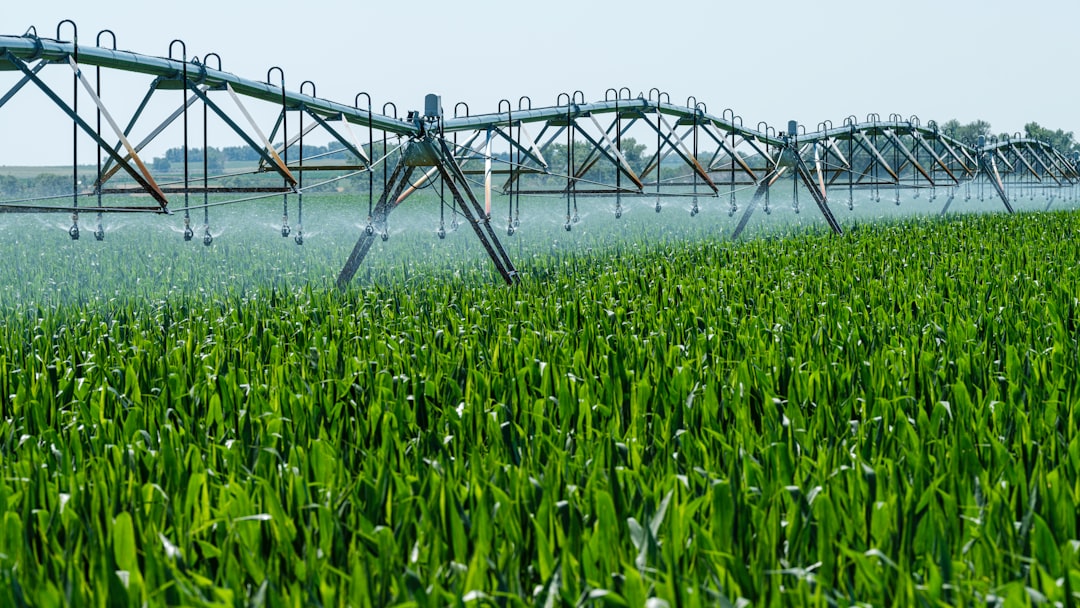Water is essential for plant growth, but overwatering can be just as damaging as underwatering. Efficient irrigation scheduling, based on the needs of plants and local weather patterns, is critical to ensure plants receive just the right amount of water. This not only promotes healthy growth but also conserves water and reduces costs.
In this blog post, we’ll explore why overwatering is a problem, how to assess plant needs, and how to use weather patterns and modern tools to create an effective irrigation schedule.
Why Avoiding Overwatering Matters
Overwatering can have serious consequences for plants and the environment, including:
-
Root Rot and Fungal Diseases:
Saturated soil deprives roots of oxygen, leading to poor plant health and vulnerability to diseases. -
Nutrient Leaching:
Excess water washes away essential nutrients from the soil, reducing fertility. -
Wasted Water Resources:
Over-irrigation wastes water, which is particularly problematic in regions facing water scarcity. -
Soil Degradation:
Constant waterlogging can cause soil compaction, reducing its ability to retain water and air.
Understanding Plant Water Needs
The water requirements of plants depend on several factors, including:
-
Growth Stage:
-
Seedlings and young plants need more frequent watering as they establish their roots.
-
Mature plants may require less frequent but deeper watering.
-
-
Plant Type:
-
Shallow-rooted plants (e.g., lettuce, beans) need regular surface watering.
-
Deep-rooted plants (e.g., tomatoes, fruit trees) benefit from less frequent but deeper irrigation.
-
-
Soil Type:
-
Sandy soils drain quickly and need more frequent watering.
-
Clay soils retain water longer, requiring less frequent irrigation.
-
Loamy soils strike a balance, holding water effectively while draining excess.
-
-
Crop Water Use Rates:
-
Different crops have varying evapotranspiration rates, which indicate how much water they use.
-
Using Weather Patterns to Guide Irrigation
Weather plays a crucial role in determining how much water plants need. By incorporating local weather data into irrigation schedules, you can prevent overwatering.
Factors to Monitor
-
Rainfall:
-
Adjust irrigation schedules to account for natural rainfall, avoiding unnecessary watering.
-
-
Temperature:
-
High temperatures increase evaporation and transpiration rates, requiring more water.
-
Cooler weather reduces water needs.
-
-
Humidity:
-
Higher humidity slows water loss from plants, reducing irrigation requirements.
-
-
Wind:
-
Windy conditions can accelerate evaporation, particularly in exposed areas.
-
Steps to Schedule Irrigation Effectively
-
Assess Soil Moisture:
Use a soil moisture meter or the simple “finger test” (inserting your finger into the soil) to determine if plants need watering. -
Water at Optimal Times:
-
Morning: Watering early in the day minimizes evaporation and allows plants to absorb water before the heat intensifies.
-
Evening: In some climates, watering in the evening is acceptable, but avoid it in humid areas to prevent fungal diseases.
-
-
Water Deeply and Infrequently:
-
Instead of frequent shallow watering, aim for deep irrigation to encourage roots to grow deeper into the soil.
-
-
Match Irrigation to Plant Growth Stages:
-
Increase irrigation during peak growth periods (e.g., flowering or fruiting stages).
-
-
Monitor Weather and Adjust:
Use weather forecasts and real-time data to modify your schedule based on rainfall, temperature, and other conditions.
Modern Tools for Irrigation Scheduling
Advancements in technology make it easier than ever to schedule irrigation accurately.
-
Smart Irrigation Controllers:
-
These systems use weather data and soil moisture sensors to automatically adjust irrigation schedules.
-
-
Soil Moisture Sensors:
-
Placed in the root zone, these sensors measure moisture levels and help determine when watering is needed.
-
-
Evapotranspiration (ET) Calculators:
-
ET-based systems calculate water loss from soil and plants to recommend optimal irrigation levels.
-
-
Weather Apps and Data Services:
-
Access to real-time weather data allows for precise adjustments to irrigation plans.
-
Case Studies of Efficient Irrigation Scheduling
California Vineyards:
-
Many vineyards use weather-based irrigation systems to adjust watering schedules, ensuring grapes receive just the right amount of moisture.
Australian Farms:
-
Farmers in Australia often use soil moisture probes combined with rainfall data to optimize irrigation for wheat and barley crops.
Urban Gardens in India:
-
Small-scale urban farmers use simple drip irrigation systems with timers to minimize water waste while maintaining healthy plants.
Practical Tips for Avoiding Overwatering
-
Mulch Your Soil:
-
A layer of mulch reduces evaporation, helping soil retain moisture for longer.
-
-
Group Plants with Similar Needs:
-
Cluster plants with similar water requirements to streamline irrigation efforts.
-
-
Inspect Your Irrigation System Regularly:
-
Check for leaks, clogs, or uneven water distribution that could lead to overwatering in certain areas.
-
-
Educate Yourself on Local Climate:
-
Learn about seasonal variations in your area to plan irrigation schedules effectively.
-
Conclusion
Efficient irrigation scheduling, tailored to plant needs and local weather patterns, is essential for sustainable agriculture and gardening. By avoiding overwatering, you can save water, improve plant health, and reduce environmental impact. Whether you’re a large-scale farmer or a home gardener, adopting smarter irrigation practices benefits both your plants and the planet.
Call to Action:
Have you tried weather-based irrigation or soil moisture sensors in your farming or gardening? Share your experiences and tips in the comments below—we’d love to hear how you manage your irrigation!

Comments
No comments yet. Be the first to comment!
You must be logged in to comment. Login